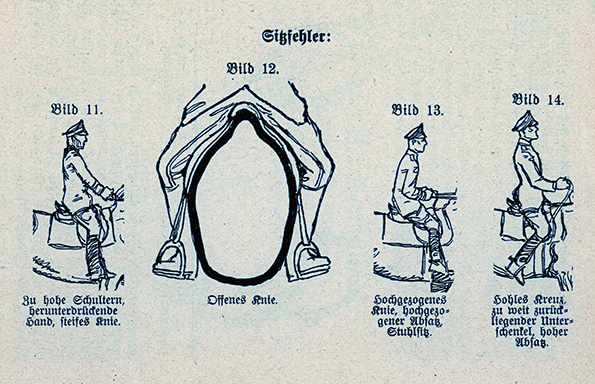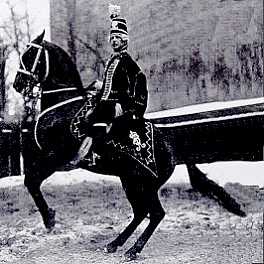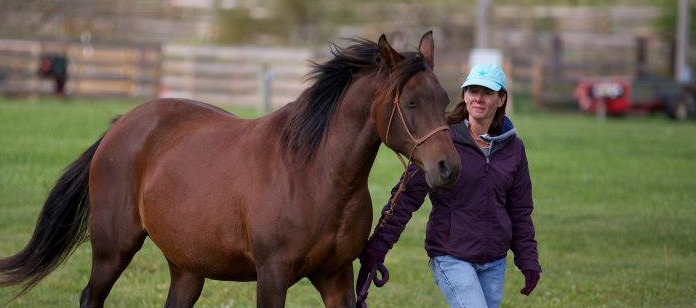The Rider’s Back Muscles – Part 1 Erector Muscles

ARE YOU RIDING “WITH BACK”?
Riding education – whether dressage, eventing, show jumping – follows a certain pattern. Once the rider develops an independent seat, is able to stay out of the horse’s mouth and does not disturb the horse in its movement, the rider learns how to “ride with back”.
Besides our rein and leg aids, there are seat (back) and weight aids. A well-educated instructor will familiarize their students with the concepts and applications of these aids in an easy-to understand format. This takes time and feel and lots of experimenting (until the ‘light bulb’ goes off…).
As riders, we need to effectively apply seat aids and control the suppleness and rigidity of our backs at will. So, our back musculature must both be strong and supple enough to support our spine and ‘do our bidding’.
“To effectively apply seat aids and control the suppleness and rigidity of our backs at will, our back musculature must be strong and supple enough to support our spine during movement ‘do our bidding’.”
Ride With Your Back!
Have you ever heard this instruction during a lesson?
What did it mean?
If we were asked to collect the horse, it meant that you should engage the ‘erector‘ muscles. These muscles straighten the spine and make you appear and feel taller.
In our illustration* to the right, these muscles are called “Rückenstrecker”. The literal translation of this German term is “back stretcher”.
* this illustration of the back muscles is from “Das Reiter ABC” by Siegfried von Haugk


The erector muscles
Strong and Supple
Just like in the horse, where strength and suppleness must go hand-in-hand, the rider also needs to be both strong and supple.
For the back muscles, this means, enough strength to
- support the spine
- engage muscles as needed and maintain this engagement through movement
and enough suppleness to
- relax muscles when an engaged back would bother the horse in its movement
- allow other anatomical elements to maintain their independence (think independent seat)


The Rider in the images above (Alois Podhajski on Nero) demonstrates the action of the erector muscles.
On the top:
The rider has a relaxed, natural spinal posture, we clearly see the “S” shape.
On the bottom:
The rider now engages his erector muscles to lengthen the spine (back stretchers…). We see how the hollow of the back has now “filled out” some, because as we lengthen the spine, it becomes straighter, also visible in the shoulder area.
NOTE: When we talk about filling the small of the back, there are TWO ways to do this.
A) For collection and
B) for driving or encouraging forward movement. Above is an example for collection.
[We will discuss the ‘driving seat’ in another article.]
The Rider’s Back – A Precision Instrument
We must take our backs seriously. They have a profound influence on how the horse moves under saddle.
In the best case scenario, your seat is a precision instrument, enabling you to have fine-tuned communication with your horse.
In the worst case scenario, an uneducated, weak or stiff rider back (or one locked into the wrong saddle) has a detrimental effect on the horse’s well being and soundness, up to behavior issues and lameness.
For most recreational riders, it is important to understand that we are ‘somewhere in between’. We do our best but may still have situations, where our riding negatively effects our horses, usually resulting in stiffness and tension.
The good news: As riders, we are all engaged in a process of continuous improvement. Let’s stay aware and work at it! As we improve our backs and seats, our horses well being and suppleness improves!
“Life’s too short to learn how to ride right.”
Master rider & instructor Felix Bürkner
In Short
- As we advance in our riding education and learn how to ‘ride with back’, we learn to use our seat aids, engage or disengage the back. We can have a collecting or driving seat.
- In order to use our seat aid – our backs – effectively, we need to have both strong & supple backs.
- As we develop our own riding skills, we may inadvertently cause tension and stiffness in our horse’s back.
- During this learning journey, it is important to
- develop our back musculature
- relax and release any tension in our back muscles
- do the same for our horses by ‘riding right’ and providing relief from tension & restriction
Ready to Ride with Back?
Take these steps:
Get a massage, go swimming, visit the sauna, roll on a foam roller, whatever it takes to massage the tension of stressful every day life right out of your back muscles!
- Recommendations: The Roll Model: A Step-by-Step Guide to Erase Pain, Improve Mobility, and Live Better in Your Body
Engage in daily, purposeful exercise that engages the back muscles and respective antagonists. (Careful! Do NOT create bulge… you do not need it!)
- Recommendations: Pavel Tsatsouline’s genius method to create strength (first) and suppleness (great for women, too!) without bulking up. Enter The Kettlebell!: Strength Secret of the Soviet Supermen
and Relax into Stretch: Instant Flexibility Through Mastering Muscle Tension
Release tension & restriction in your horse, so you can ‘swing’ together!
- Recommendation: Schedule a Horse Wellness evaluation and/or bodywork session for your horse.

And/or learn safe and effective techniques yourself! I recommend learning the Masterson Method® of Integrated Equine Performance Bodywork™.
- Recommendation: Start with the book Beyond Horse Massage: A Breakthrough Interactive Method for Alleviating Soreness, Strain, and Tension
Questions?
Please contact me or leave a comment below. Would love to hear from you.
Enjoy your horse!
Stefanie Reinhold
ReinholdsHorseWellness.com
HorseHaus.com
Please note: I may earn a small commission from any purchase as a result of readers following links to other e-commerce sites, such as Amazon.



